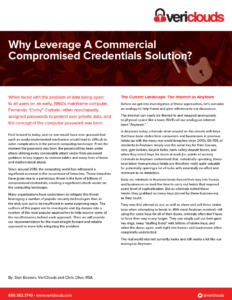Zero Trust and Stolen Credentials
Zero Trust is a security model that assumes that all devices, networks, and users are untrusted until proven otherwise. This approach is in contrast to the traditional security model, which assumes that devices, networks, and users inside an organization's network are trusted. The Zero Trust model is based on the principle of "never trust, always verify."
The term "Zero Trust" was first coined by John Kindervag, a security analyst at Forrester Research, in 2010. Since then, the concept has gained traction as organizations have become increasingly aware of the risks posed by cyber threats. Zero Trust is not a single technology or solution, but rather a framework that organizations can use to improve their overall security posture.
One of the key components of Zero Trust is the use of multi-factor authentication (MFA) for all users and devices. MFA requires users to provide multiple forms of authentication, such as a password and a fingerprint or a password and a security token, to gain access to resources. This makes it much more difficult for attackers to gain access to an organization's systems and data using stolen credentials.
Another key component of Zero Trust is the use of network segmentation. This involves dividing an organization's network into smaller segments, or micro-segments, that can be more easily secured and monitored. This makes it more difficult for attackers to move laterally through an organization's network once they have gained access.
Zero Trust also includes the use of identity threat detection and response systems that can detect and respond to suspicious activity in real-time. These systems use artificial intelligence and machine learning to analyze network traffic and identify potential threats. When a threat is detected, the system can take automated actions to block the attack and alert security teams.
One of the key challenges of implementing Zero Trust is the need to balance security with usability. Many security measures, such as MFA and network segmentation, can be cumbersome for users and can slow down business processes. Organizations need to find the right balance between security and usability to ensure that their security measures are effective without causing undue inconvenience for users.
Stolen credentials are a major concern for organizations as it is a common tactic used by cyber attackers to gain access to an organization's systems and data. Stolen credentials are often obtained through phishing attacks, where attackers send emails to users that appear to be from legitimate sources and ask them to enter their login credentials. Once the attacker has the user's login credentials, they can use them to gain access to the user's account and the resources it has access to.
To protect against stolen credentials, organizations can use credential verification and identity threat intelligence combined with MFA. The VeriClouds Identity Threat Detection and Response Platform is a risk insight management platform designed to block stolen credentials from being used during login by providing visibility, rapid detection, and automated remediation using patented CredVerify technology. This makes it much more difficult for attackers to gain access to an organization's systems and data using stolen credentials.
In summary, Zero Trust is a security model that assumes that all devices, networks, and users are untrusted until proven otherwise, it is a framework that organizations can use to improve their overall security posture. Zero Trust includes the use of multi-factor authentication, network segmentation, threat detection and response systems, and balance security with usability. Stolen credentials are a major concern for organizations and VeriClouds patented CredVerify technology and identity threat intelligence solutions ensures that stolen credentials are not used as a weapon during account takeover or credential stuffing attacks.
See Identity Threat Detection & Response in Action
"Prior to VeriClouds, several of my security teams relied on Have I Been Pwned which has all the stuff in public breaches. Using a 3rd party service who are good stewards of more sensitive breach data was important to us to complement our own internal capabilities. That is an area that we did due diligence with VeriClouds."
— John Donovan, Former CISO, Malwarebytes


